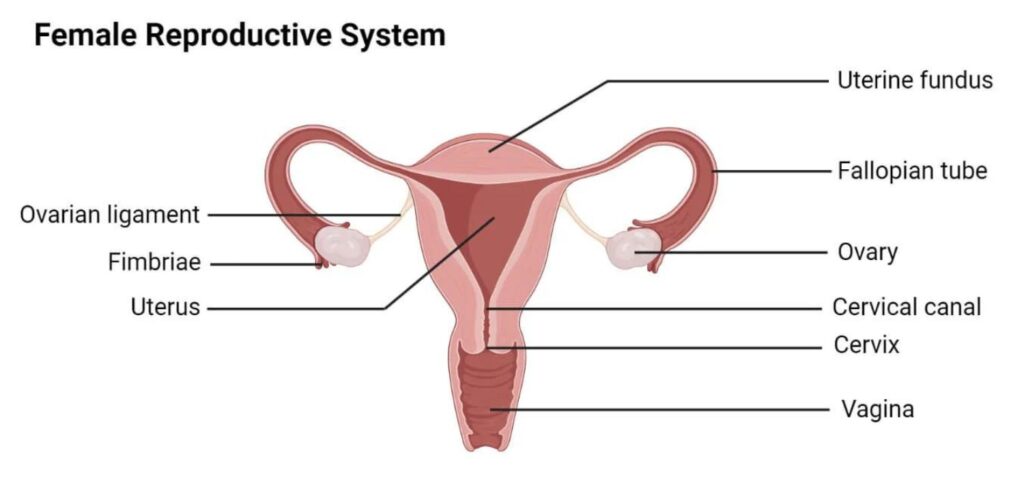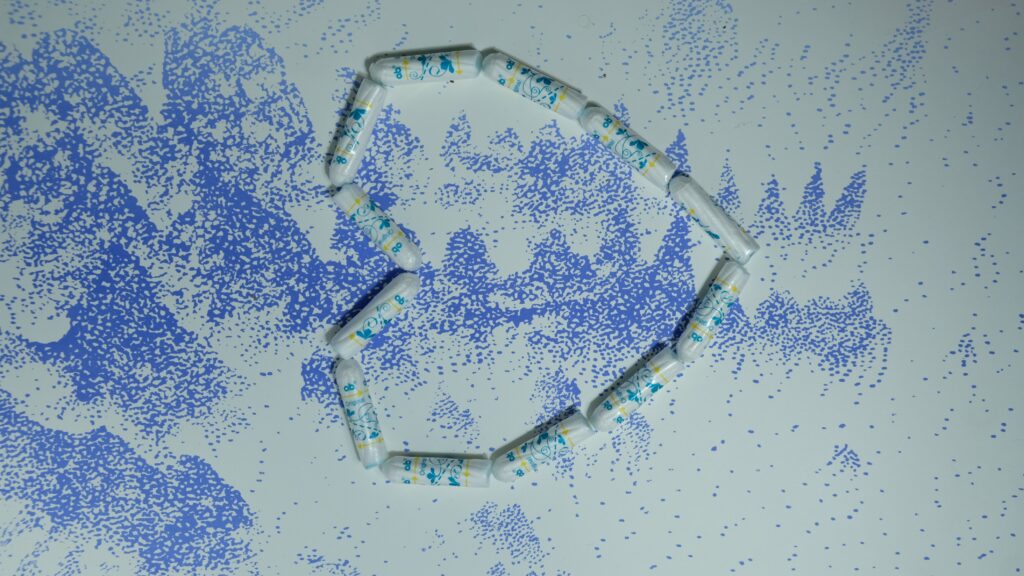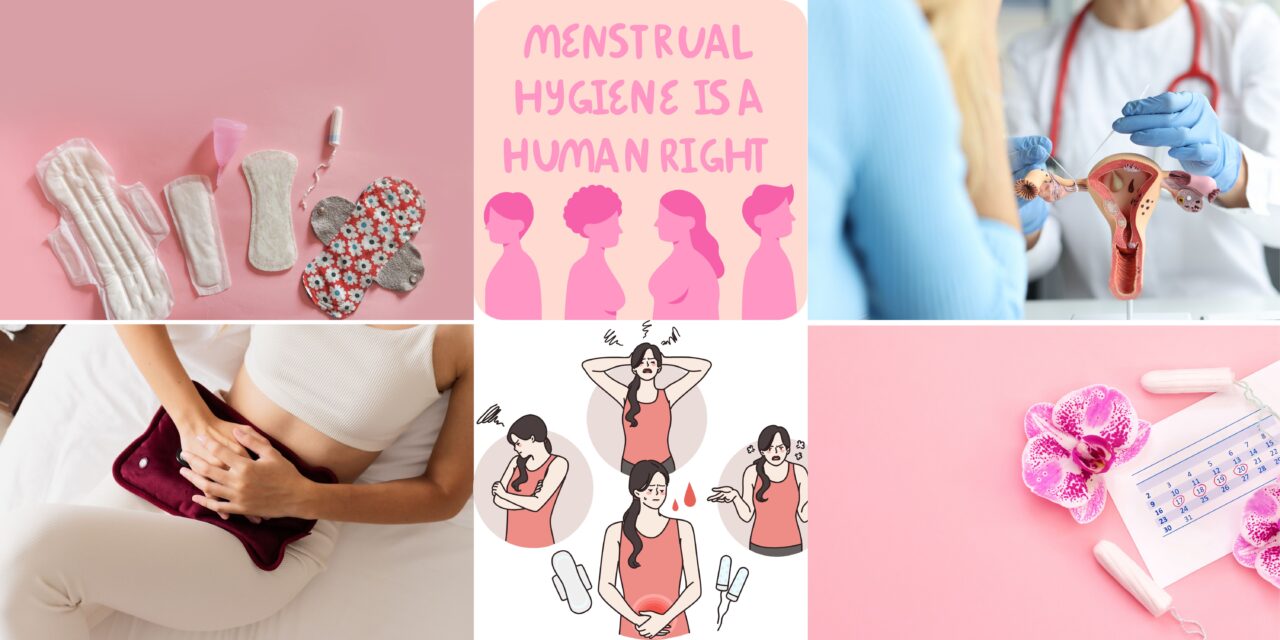Learn about the menstrual cycle, common issues and how to manage them in this Complete Guide to menstruation.
Introduction of Menstruation
Definition of Menstruation
Menstruation is the process in which a female’s body releases an unfertilized egg, as well as tissue, blood and mucus from the uterus. It typically occurs every 28 days. But can vary from person to person. It is part of the natural menstrual cycle. Which is essential for fertility and reproductive health.
Importance of Understanding Menstruation
Menstruation is an incredibly important, natural process that every woman experiences. Understanding menstruation is key to developing a healthy relationship with our bodies. As well as understanding changes that may occur throughout our life-cycle.
It is important to be aware of the various physical and emotional changes that can accompany menstruation. As well as how to manage these changes.
Additionally, understanding the biology of menstruation can help women become more informed about their health and make more informed decisions about their reproductive health.
Purpose of the Article
This article aims to provide a comprehensive guide to understanding menstruation. It covers the anatomy of the female reproductive system, the menstrual cycle, menstrual symptoms, and menstrual hygiene.
The article also covers important topics related to reproductive health. Such as fertility, contraception, and menstrual disorders.
Anatomy of the Female Reproductive System of Menstruation

Ovaries
Ovaries are reproductive organs located in the female body. They produce hormones including estrogen, progesterone and other important reproductive hormones.
The ovaries also produce eggs, or ova. Which are released during ovulation and travel down the fallopian tubes towards the uterus. Without ovaries, a woman cannot become pregnant.
Uterus
The uterus is a muscular organ located in the female reproductive system. It is where a fertilized egg implants and develops into a fetus during pregnancy.
The uterus has thick walls and is capable of expanding to accommodate the growing fetus. The uterus also contracts during labor to help remove the baby.
During menstruation, the uterus sheds its inner lining, leading to the release of menstrual blood through the vagina.
Cervix
The cervix is the lower part of the uterus that protrudes into the vagina. It is made up of strong muscles and has a small opening, called the cervical canal. Which leads from the uterus to the vagina.
The cervix is involving in several important functions, including:
- Birth: During childbirth, the cervix dilates to allow the baby to pass through into the vagina.
- Menstruation: During menstruation, menstrual blood flows from the uterus through the cervical canal and out of the body.
- Fertility: The cervical canal is a potential pathway for sperm to reach the uterus, where fertilization can occur.
- Screening tests: The cervix can be screen for abnormal cells during a pelvic exam or Pap test. This can help detect cervical cancer or precancerous changes in the cells.
Fallopian Tubes
The fallopian tubes are two thin tubes located on either side of the uterus that connect the ovaries to the uterus.
They play a vital role in female fertility by facilitating the transit of eggs from the ovaries to the uterus.
- Ovulation: During ovulation, an egg is release from one of the ovaries and travels into the fallopian tube. Where it can be fertilize by sperm.
- Fertilization: If sperm is present in the fallopian tube, it can fertilize the egg, resulting in pregnancy.
- Implantation: If fertilization occurs, the fertilized egg travels down the fallopian tube and implants itself in the lining of the uterus.
- Infertility: Fallopian tube damage or blockage can lead to infertility. This can occur as a result of conditions such as pelvic inflammatory disease, endometriosis, or previous surgical procedures.
The Menstrual Cycle

Phases of the Menstrual Cycle
The menstrual cycle is the monthly series of physiological changes that occur in a woman’s reproductive system. It is dividing into three phases:
- Follicular Phase: The follicular phase begins on the first day of menstruation and lasts approximately 14 days. During this time, the ovaries produce follicles that contain eggs. One of these follicles will eventually mature and release an egg.
- Ovulatory Phase: The ovulatory phase is the period when ovulation occurs. This typically happens on day 14 of a 28-day cycle, although the exact timing can vary. During ovulation, the mature follicle releases an egg into the fallopian tube, where it can be fertilize by sperm.
- Luteal Phase: The luteal phase begins after ovulation and lasts approximately 14 days. During this time, the body prepares for a potential pregnancy. If the egg is not fertilize, the levels of hormones in the body decrease, leading to the shedding of the endometrial lining and the start of a new menstrual cycle. If the egg is fertilize, the hormonal changes prevent menstruation and support the growth and development of the fetus.
Hormonal Changes During Menstruation
The menstrual cycle is controlled by a complex interplay of hormones, including:
- FSH (Follicle-Stimulating Hormone): This hormone is produced by the pituitary gland and stimulates the growth of follicles in the ovaries.
- LH (Luteinizing Hormone): This hormone triggers ovulation, causing the mature follicle to release an egg.
- Estrogen: This hormone is produced by the ovaries and prepares the endometrial lining for implantation.
- Progesterone: This hormone is produced by the ovaries after ovulation and helps to maintain the endometrial lining.
During menstruation, the levels of estrogen and progesterone decrease, leading to the shedding of the endometrial lining and the start of a new menstrual cycle. If the egg is fertilized, the levels of estrogen and progesterone increase to support the growth and development of the fetus. Hormonal imbalances or changes can impact the regularity and length of menstrual cycles, leading to conditions such as irregular periods or premenstrual syndrome (PMS).
Average Length of the Menstrual Cycle
The average length of a menstrual cycle is 28 days, although it can range from 21 to 35 days. A menstrual cycle is considered regular if it occurs approximately every 28 days and lasts for approximately 3-7 days. However, many women experience variations in their menstrual cycle, and this is considered normal, especially during the teenage years, after giving birth, or approaching menopause.
It’s important to keep track of your menstrual cycle, as changes in its length or regularity can be a sign of an underlying health issue. If you have concerns about your menstrual cycle or any related symptoms, it’s recommended to speak with your healthcare provider for a proper evaluation and management.
Menstruation Symptoms
Common Physical Symptoms of Menstruation
During menstruation, many women experience physical symptoms, including:
- Cramping: Mild to moderate abdominal pain or cramping is a common symptom of menstruation.
- Bloating: The hormonal changes during menstruation can cause fluid retention and bloating.
- Breast tenderness: Swelling and tenderness of the breasts can occur before and during menstruation.
- Fatigue: Hormonal fluctuations and loss of blood during menstruation can cause fatigue.
- Headaches: Hormonal changes during menstruation can trigger headaches and migraines.
- Acne breakouts: Hormonal fluctuations can cause an increase in oil production, leading to acne breakouts.
- Diarrhea or constipation: The hormonal changes during menstruation can cause digestive symptoms such as diarrhea or constipation.
These symptoms are generally mild and can be managed with over-the-counter pain relievers, heat therapy, or lifestyle modifications. However, if the symptoms are severe or interfere with daily activities, it’s recommended to speak with your healthcare provider for further evaluation and management.
Emotional symptoms of menstruation
Many women also experience emotional symptoms during menstruation, including:
- Mood swings: Hormonal changes during menstruation can cause mood swings, irritability, and feelings of sadness or anxiety.
- Crying spells: Women may experience feelings of tearfulness or sadness during their menstrual cycle.
- Anger: Women may experience feelings of anger or frustration during their menstrual cycle.
- Lack of interest or motivation: Women may feel less motivated or interested in their usual activities during their menstrual cycle.
- Insomnia: The hormonal changes during menstruation can cause sleep disturbances, leading to insomnia or difficulty sleeping.
- Food cravings: Women may experience food cravings, especially for sugar and carbohydrates, during their menstrual cycle.
These emotional symptoms are a part of premenstrual syndrome (PMS), which affects approximately 85% of women. The symptoms are generally mild and can be manage with lifestyle modifications. Such as exercise, stress management techniques, or over-the-counter pain relievers. However, if the symptoms are severe or interfere with daily activities, it’s recommending to speak with your healthcare provider for further evaluation and management.
Managing Menstrual Symptoms
Managing menstrual symptoms can involve a combination of lifestyle modifications and medical treatments, including:
- Pain relief: Over-the-counter pain relievers, such as ibuprofen or naproxen, can help relieve menstrual cramps. Heat therapy, such as a heating pad or hot water bottle, can also provide relief.
- Exercise: Regular physical activity can help relieve menstrual cramps and reduce stress levels.
- Stress management: Techniques such as deep breathing, meditation, or yoga can help manage stress levels and reduce emotional symptoms during menstruation.
- Dietary changes: Eating a healthy, balanced diet and avoiding foods that trigger bloating or digestive symptoms can help manage menstrual symptoms.
- Hormonal therapy: In cases of severe menstrual symptoms, hormonal therapy, such as birth control pills or hormonal intrauterine devices (IUDs), can help regulate menstrual cycles and reduce symptoms.
- Alternative therapies: Some women find relief from menstrual symptoms with alternative therapies, such as acupuncture or herbal supplements.
It’s important to speak with your healthcare provider for a proper evaluation and management of menstrual symptoms, as some symptoms may be indicative of an underlying health issue. Your healthcare provider can recommend the most appropriate treatment plan based on your individual needs and medical history.
Menstruation and Reproductive Health
Understanding Fertility
Understanding menstrual cycles and reproductive health is important for women who are trying to conceive or who are monitoring their fertility. Some key points to consider include:
- Fertility window: The menstrual cycle is divided into two phases, the follicular phase and the luteal phase. The fertile window occurs during the follicular phase, when the ovaries release an egg that can be fertilize. This window typically occurs around day 14 of a 28-day menstrual cycle, but it can vary depending on individual cycles.
- Ovulation: Ovulation is the process of the ovaries releasing an egg that can be fertilize by sperm. Ovulation occurs approximately 14 days before the start of the next menstrual cycle.
- Basal body temperature: Basal body temperature is the body’s temperature at rest, and it can be use to monitor ovulation. Women can track their basal body temperature to identify when ovulation occurs and determine the fertile window.
- Ovarian reserve: Ovarian reserve refers to the number of eggs available in the ovaries. Ovarian reserve decreases with age, and it can impact a woman’s ability to conceive.
- Polycystic ovary syndrome (PCOS): PCOS is a hormonal disorder that can impact fertility. Women with PCOS may experience irregular menstrual cycles and have difficulty ovulating.
By understanding menstrual cycles and reproductive health, women can better monitor their fertility and identify any potential fertility issues. It’s important to speak with a healthcare provider for a proper evaluation and management of menstrual and reproductive health concerns.
Contraception
Contraception, or birth control, is an important aspect of reproductive health, and there are a variety of options available to women. Some common forms of contraception include:
- Hormonal contraception: This type of birth control uses hormones to prevent pregnancy. Options include birth control pills, hormonal intrauterine devices (IUDs), the birth control shot, and the birth control implant.
- Barrier methods: Barrier methods, such as condoms, diaphragms, and cervical caps, physically block the sperm from reaching the egg.
- Natural family planning: Natural family planning involves monitoring the menstrual cycle and identifying the fertile window to avoid intercourse during this time.
- Sterilization: Sterilization is a permanent form of birth control, and options include tubal ligation for women and vasectomy for men.
It’s important to choose a form of contraception that fits individual needs and preferences, and to speak with a healthcare provider for a proper evaluation and recommendation. Factors such as age, medical history, and lifestyle should be considered when choosing a form of contraception. Additionally, it’s important to use contraception consistently and correctly to prevent unintended pregnancy.
Premenstrual Syndrome (PMS)
Premenstrual syndrome (PMS) is a group of symptoms that some women experience before the start of their menstrual cycle. Some common symptoms of PMS include:
- Mood swings: Irritability, anxiety, and depression are common emotional symptoms of PMS.
- Physical symptoms: Bloating, cramping, fatigue, and breast tenderness are common physical symptoms of PMS.
- Food cravings: Some women experience cravings for certain foods, such as sweets or salty foods, during PMS.
- Sleep disturbance: Sleep disturbance, such as insomnia or excessive fatigue, can occur during PMS.
The exact cause of PMS is not known, but it is thought to be related to hormonal fluctuations during the menstrual cycle. Treatment for PMS can include over-the-counter pain relief, lifestyle changes, such as exercise and stress management, and prescription medications.
It’s important to speak with a healthcare provider if PMS symptoms are impacting daily life or if they are severe. Additionally, it’s important to be aware that PMS symptoms can be similar to symptoms of other conditions, such as depression or anxiety, and a proper evaluation is need for proper diagnosis and treatment.
Menstrual Disorders
Menstrual disorders refer to a group of conditions that can impact the menstrual cycle and cause discomfort or disruption to daily life. Some common menstrual disorders include:
- Heavy bleeding: Menorrhagia is a condition characterize by heavy and prolonged menstrual bleeding.
- Irregular periods: Oligomenorrhea is a condition characterize by infrequent periods, while amenorrhea is the absence of menstrual periods.
- Painful periods: Dysmenorrhea is a condition characterize by painful periods.
- Endometriosis: This is a condition in which the tissue that normally lines the inside of the uterus grows outside of it.
- Polycystic ovary syndrome (PCOS): This is a condition in which the ovaries produce too much androgen, a male hormone, and can cause irregular periods and other symptoms.
Treatment for menstrual disorders depends on the underlying cause, and can range from lifestyle changes, such as exercise and stress management, to medications and surgery.
It’s important to speak with a healthcare provider if menstrual symptoms are impacting daily life or if they are severe. Proper evaluation and diagnosis is need for proper treatment and management of menstrual disorders.
Menstruation and Hygiene

Personal Hygiene During Menstruation
Personal hygiene during menstruation is important for maintaining comfort and preventing infection. Here are some tips for personal hygiene during menstruation:
- Change your sanitary product regularly: Change your tampon or pad every 4-8 hours, or as directed by the manufacturer. Using a menstrual cup or sponge can also help reduce the need for frequent changes.
- Wash your hands before and after changing your sanitary product: This can help prevent the spread of bacteria and infection.
- Clean the genital area daily: Use warm water and gentle soap to clean the genital area. Avoid using scented or perfumed products, as they can irritate the skin.
- Wear breathable clothing: Wear loose, breathable clothing to reduce moisture and promote comfort.
- Change your pads or tampons at night: Wearing a pad or tampon overnight can increase the risk of toxic shock syndrome (TSS), a rare but serious bacterial infection. Consider using a menstrual cup or sponge overnight, or wearing period-proof underwear.
- Dispose of sanitary products properly: Wrap used tampons or pads in toilet paper or a sanitary pad wrapper before disposing of them in the trash. Do not flush sanitary products down the toilet, as they can clog the pipes.
By following good personal hygiene practices during menstruation, women can maintain comfort and reduce the risk of infection. Additionally, it’s important to speak with a healthcare provider if menstrual symptoms are impacting daily life or if they are severe. Proper evaluation and diagnosis is needed for proper treatment and management of menstrual symptoms.
Sanitary Products for Menstruation
Sanitary products are used to absorb menstrual flow and maintain personal hygiene during menstruation. Some common types of sanitary products include:
- Tampons: Tampons are small, cylindrical products that are inserted into the vagina to absorb menstrual flow. Tampons are available in various sizes and absorbencies, and can be made from cotton, rayon, or a combination of materials.
- Pads: Pads are adhesive products that attach to the underwear and absorb menstrual flow. Pads are available in various sizes and absorbencies, and can be made from cotton, rayon, or a combination of materials.
- Menstrual cups: Menstrual cups are bell-shaped products that are inserted into the vagina to collect menstrual flow. Menstrual cups are made from silicone or latex and can be reusable.
- Discreet products: Discreet products, such as panty liners or period-proof underwear, can be used for light flow or as backup protection.
It’s important to choose a sanitary product that fits individual needs and preferences, and to change it regularly, as directed. It’s also important to follow manufacturer instructions for proper use and disposal of sanitary products.
By using proper sanitary products, women can maintain good hygiene and comfort during menstruation. Additionally, it’s important to speak with a healthcare provider if menstrual symptoms are impacting daily life or if they are severe. Proper evaluation and diagnosis is needed for proper treatment and management of menstrual symptoms.
Alternative Menstrual Products
Alternative menstrual products are sanitary products that are used as an alternative to traditional products, such as tampons or pads. Some alternative menstrual products include:
- Reusable pads: Reusable pads are made from cloth and can be washed and reused, reducing waste and environmental impact.
- Menstrual sponges: Menstrual sponges are natural, sea sponges that are use to absorb menstrual flow. Menstrual sponges are biodegradable and can be reused.
- Menstrual discs: Menstrual discs are soft, flexible products that are insert into the vagina to collect menstrual flow. Menstrual discs are reusable and can be worn for up to 12 hours.
- Menstrual undies: Menstrual undies are specially design underwear that absorb menstrual flow and can be worn as a standalone product or as backup protection.
It’s important to choose an alternative menstrual product that fits individual needs and preferences and to follow manufacturer instructions for proper use and care.
By using alternative menstrual products, women can maintain good hygiene and comfort during menstruation, while reducing waste and environmental impact. Additionally, it’s important to speak with a healthcare provider if menstrual symptoms are impacting daily life or if they are severe. Proper evaluation and diagnosis is need for proper treatment and management of menstrual symptoms.
Conclusion of Menstruation
Recap of Key Points: In this article, we covered the anatomy of the female reproductive system, the menstrual cycle, menstrual symptoms, and menstrual hygiene. We also discussed important topics related to reproductive health, such as fertility, contraception, and menstrual disorders.
Emphasizing the Importance of Understanding Menstruation: Understanding menstruation is important for women as it helps them to better manage their menstrual cycle and the symptoms that accompany it. It also helps women to make informed decisions about their reproductive health and family planning.
Final Thoughts: In conclusion, by understanding menstruation, women can take control of their reproductive health and live a healthier, more comfortable life.
References
A. Reliable Sources Used in the Article:
- Mayo Clinic. (2021). Menstruation: What’s normal, what’s not. Retrieved from https://www.mayoclinic.org/healthy-lifestyle/womens-health/in-depth/menstruation/art-20047186
- American College of Obstetricians and Gynecologists. (2021). Menstruation. Retrieved from https://www.acog.org/womens-health/faqs/menstruation
- World Health Organization. (2021). Menstrual hygiene management. Retrieved from https://www.who.int/campaigns/menstrual-hygiene-day/mhd-2021-theme
- National Institute of Child Health and Human Development. (2021). Fertility and infertility. Retrieved from https://www.nichd.nih.gov/







It¦s really a great and helpful piece of info. I¦m happy that you simply shared this useful info with us. Please keep us informed like this. Thank you for sharing.
whoah this blog is fantastic i like studying your articles. Keep up the good work! You recognize, a lot of individuals are hunting round for this info, you could help them greatly.
Deference to post author, some great information .
I don’t think the title of your article matches the content lol. Just kidding, mainly because I had some doubts after reading the article.
Your article helped me a lot, is there any more related content? Thanks!
Thanks for sharing. I read many of your blog posts, cool, your blog is very good.
I don’t think the title of your article matches the content lol. Just kidding, mainly because I had some doubts after reading the article.
Thanks for sharing. I read many of your blog posts, cool, your blog is very good.
I have read a few good stuff here. Definitely worth bookmarking for revisiting. I wonder how much effort you put to make such a magnificent informative web site.
Can you be more specific about the content of your article? After reading it, I still have some doubts. Hope you can help me.
Your article helped me a lot, is there any more related content? Thanks!
Your article helped me a lot, is there any more related content? Thanks!
Your article helped me a lot, is there any more related content? Thanks!
What i don’t understood is actually how you’re no longer really much more neatly-favored than you may be right now. You’re very intelligent. You know thus considerably relating to this topic, produced me individually believe it from numerous various angles. Its like women and men don’t seem to be interested except it is one thing to accomplish with Woman gaga! Your personal stuffs excellent. At all times care for it up!
Truly inspirational work, or so I tell myself as I avoid my own projects.
What a refreshing take on this subject. I completely agree with The points!
Can you be more specific about the content of your article? After reading it, I still have some doubts. Hope you can help me.
You got a very wonderful website, Glad I observed it through yahoo.
A person essentially assist to make severely articles I would state. That is the very first time I frequented your web page and thus far? I amazed with the analysis you made to create this particular publish extraordinary. Excellent job!
A lot of the things you mention is astonishingly appropriate and it makes me ponder the reason why I hadn’t looked at this in this light before. Your article truly did switch the light on for me personally as far as this subject matter goes. Nevertheless at this time there is actually one point I am not really too cozy with and whilst I attempt to reconcile that with the core idea of the point, permit me observe just what the rest of the subscribers have to point out.Well done.
Its like you read my thoughts! You seem to understand so much approximately this, such as you wrote the e book in it or something. I believe that you could do with a few percent to drive the message home a bit, but other than that, this is wonderful blog. A great read. I’ll certainly be back.
The very core of your writing while appearing agreeable at first, did not settle very well with me after some time. Someplace throughout the paragraphs you were able to make me a believer but just for a short while. I still have a problem with your leaps in assumptions and one would do nicely to fill in all those gaps. In the event that you can accomplish that, I will undoubtedly end up being impressed.
Genuinely impressed by The analysis. I was starting to think depth had gone out of style. Kudos for proving me wrong!
The posts are like a secret garden of knowledge. I’m always excited to see what’s blooming.
Reading this gave me a lot of insights. The expertise really shines through, and I’m grateful for it.